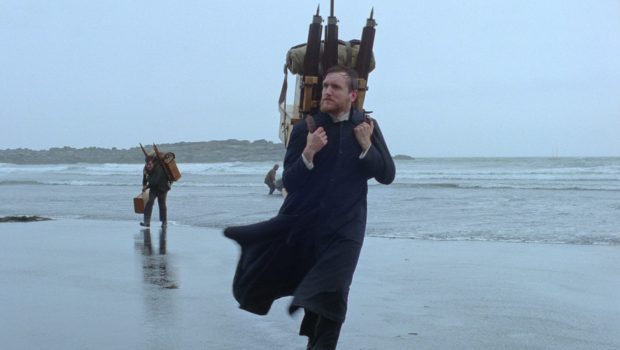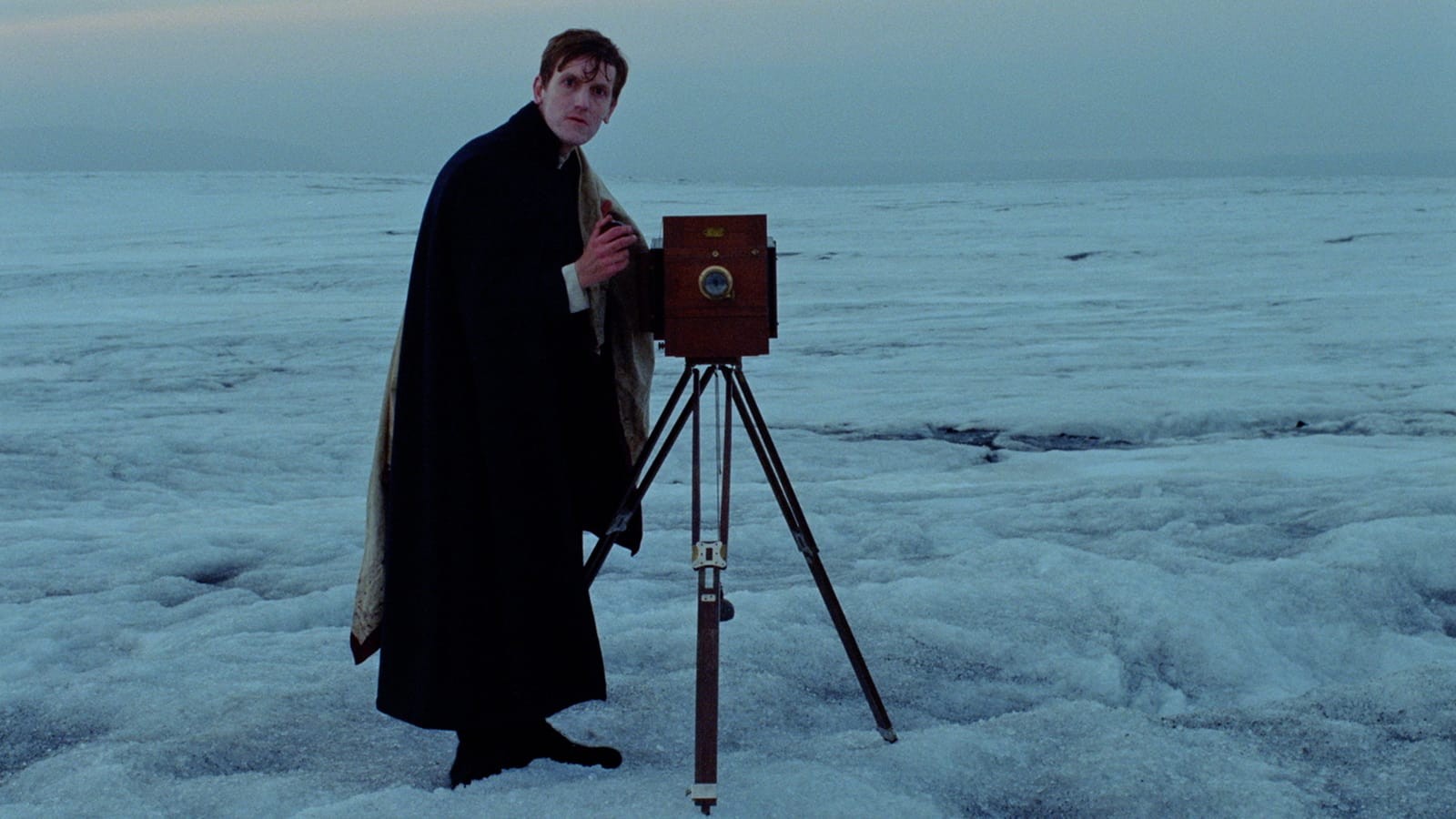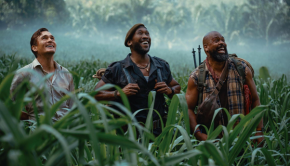Godland – Film Review
Reviewed by Damien Straker on the 13th August 2023
Palace Films presents a film by Hlynur Pálmason
Written by Hlynur Pálmason
Produced by Eva Jakobsen, Mikkel Jersin, Katrin Pors, and Anton Máni Svansson
Starring Elliott Crosset Hove, Ingvar Eggert Sigurðsson, Vic Carmen Sonne, Hilmar Guðjónsson, and Jacob Lohmann
Cinematography Maria von Hausswolff
Edited by Julius Krebs Damsbo
Music by Alex Zhang Hungtai
Rating: M
Running Time: 142 minutes
Release Date: the 17th of August 2023
Godland, an engrossing Icelandic drama by director Hlynur Pálmason, is buoyed by superb technical feats. The way the cold, brutal landscape is filmed makes the first half of the story compelling and beautiful to behold. The vivid, atmospheric physical journey then gives way to a battle of personalities and values in the second half that might not be as original but is still fascinating since it is acted with great conviction. After delivering the superb crime drama A White White Day (2019) to critical acclaim and now this visually accomplished feature, it will be interesting to see where Pálmason’s talents are applied next. With Godland he proves he has the formal instincts to transform tough landscapes into rich, dramatic settings we have rarely seen before on screen.
The first half is an arduous physical journey from Denmark to Iceland. Set in the 19th Century, a Danish priest named Lucas (Elliott Crosset Hove) is assigned a special task. He is asked to travel to Iceland and navigate the deadly mountain terrains so he can build a church on the mainland. What is most frustrating for Lucas is the Icelandic navigators on the journey, including an uncompromising local named Ragnar (Ingvar Eggert Sigurðsson), do not speak Danish. It is up to Lucas’s friend (Hilmar Guðjónsson) to translate as they press towards their objective of the mainland. Together, they also take a series of photographs of the land (Pálmason told his backers the film was inspired by those pictures when it is really a clever bit of fiction by the director).
The difficulty of the trek takes a punishing physical and psychological toll on Lucas. His faith also wavers as he pleads with God to release him. In the second half, he and his crew begin to construct the church. However, there are various distractions around them. Lucas is soon attracted to a woman in a village named Anna (Vic Carmen Sonne). Their bond tests his faith and pits him against her imposing father, Carl (Jacob Lohmann).
The bleak, naturalistic photography of Godland is exquisite to behold. The voyage commences by ship and the way the camera rocks violently with the sea is visceral and disorientating. On land, the steep mountains and lush green valleys are also sumptuously photographed. The bone chilling weather throughout these compositions is so tactile you can nearly touch the grey, muddy soil on the ground. Pálmason uses this tense climate and spatiality to express the isolation and danger of Lucas’s journey. A decision critical to forging this psychological pattern is shooting in the narrow 1.33:1 aspect ratio. In the film’s opening, Lucas is filmed in a medium close-up shot. His superior warns him about how alienating Iceland is. He then describes how everything is different to Denmark, including the day and night cycle, and compares Lucas’s role to the impossible task of the Apostles. The image of his face as he hears this, paired with the box ratio, expresses his loneliness as he realises the enormity of his task.
The shot selection continues to inform his isolation as he is increasingly disheartened by the physical journey. In one incredible moment, the camera peers downwards from a high-angle shot so that Lucas and his friend are rendered as tiny miniatures against the landscape. The vision suggests they are being tested by God as they navigate the mountains. In another scene, the camera crabs sideways as the group transverses the landscape on horseback. The sideways movement of the camera shows the extent of the voyage as Lucas continues lumbering behind the rest of the group. Pálmason also captures moments of deft contrast, such as Ragnar expertly skinning an animal while Lucas is clumsy and struggles to assemble his tent. Later, there is an incredible one-take tracking shot after Lucas collapses on the ground. From a low angle, the camera slowly pans across the ground in search of his body. It is a direct contrast to the steeper camera shot from earlier in the film. The single movement suggests that survival is all that matters as his faith wavers. Evidently, Pálmason has a tremendous eye for landscapes and images as he finds visual expressions of Lucas’s inner torment and change in values.
The formal presentation and bleak environments are complemented by cryptic metaphors. In one of the weirdest scenes, Ragnar tells a strange story about a man who found a group of eels. He says the sound they were making was comparable to the pleasures of a woman. The man is then shocked to find his wife together in bed with various men. It is a bizarre anecdote, but suggestive of how bleak naturalism and human behaviour are intertwined. The duality of the story’s structure reflects this relationship. The first half is about survival as Lucas navigates the deadly terrain. The second half though studies gender politics and alpha males. Carl tries warning his daughter Anna about Lucas by saying, ‘we don’t need men like him around’. There is also an interesting scene where the men partake in a traditional wrestling contest. Carl deliberately calls Lucas to challenge him while the village watches. Lucas himself is torn by complex binaries. He is romantically attracted to Anna but bitter at Ragnar for not helping him more on the journey. Violent repression is critical to the idea that men are as cold and merciless as nature itself. It is true that the second half is less unique than the physical journey. There have been many other films about traditional villages being upended. Yet these scenarios are solidly realised due to the utterly naturalistic performances of the actors as they reflect their characters’ physical decline and conflicting mindsets.
Godland is a sophisticated psychological drama that is photographed with an enormous amount of skill and attention to detail. The locations and photography are incredible to witness and so is Pálmason’s careful eye for bleak, oppressive imagery. Rather than focusing on the tough scenic beauty alone, the images underline the isolation of the protagonist and reinforce the ideas around nature and how it can challenge traditional structures. We also see how people succumb to their most primal instincts (sex and violence) when they feel aggrieved and fail to understand the people around them. Godland strongly dramatises this crisis of faith while offering some of the most incredible scenery put on film recently. The first half with the trek slightly eclipses the second part in the village where gender politics is emphasised. Yet it still leaves us asking which stories Pálmason will explore next as he emerges as a gifted cinematic stylist.
Summary: Godland is a sophisticated psychological drama that is photographed with an enormous amount of skill and attention to detail.








